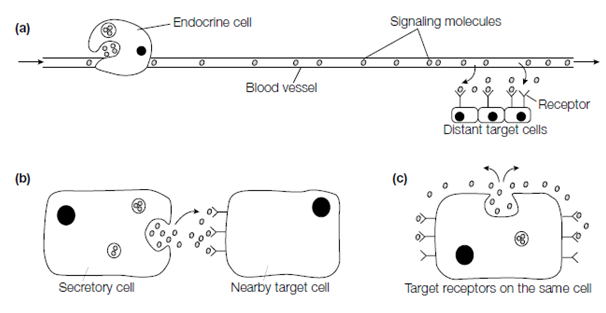Signaling molecules with intracellular receptors
Little lipophilic (lipid-soluble) hormones diffuse across the plasma membrane and then interact with intracellular receptors in the nucleus or cytosol. The receptors are all structurally associated, being part of the nuclear receptor super family. The resulting hormone–receptor complex frequently binds to regions of the DNA and affects the transcription of certain genes. The Small lipophilic hormones with intracellular receptors involves the steroid hormones which are synthesized from cholesterol for instance the female sex hormones estrogen and progesterone, thyroxine that is produced through thyroid cells and is the principal iodinated compound in animals, retinoic acid that is derived from vitamin A, and vitamin D that is synthesized in the skin in response to sunlight.
An very important and remarkable instance of a small signaling molecule which passes readily across the goal cell plasma membrane is the gas nitric oxide that is NO. This is used in both animals and plants. Nitric oxide is synthesized through the deamination of arginine catalyzed by the enzyme nitric oxide synthase. Nitric oxide rapidly diffuses out of the cell where it is produced and into neighboring cells it only acts locally as it has a short half-life about 5–10 s. In several target cells, nitric oxide binds to the active site of guanylyl cyclase, motivating the enzyme to produce the small intracellular mediator cGMP. Nitroglycerine, that is used to treat patients with angina pain resulting from inadequate blood flow to the heart muscle, is converted to Nitric oxide that relaxes the blood vessels while reducing the workload on the heart. The Carbon monoxide (CO) is another gas which is used as a signaling molecule, again through stimulating guanylyl cyclase.

Figure: Cellular signaling. (a) Endocrine, (b) paracrine, (c) autocrine.